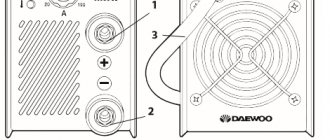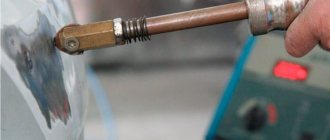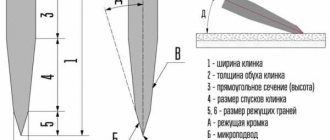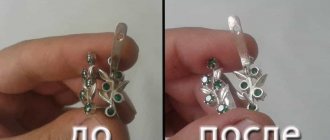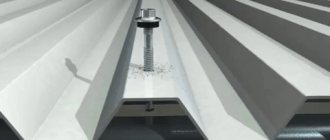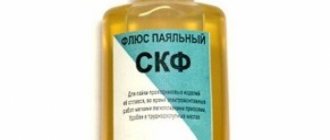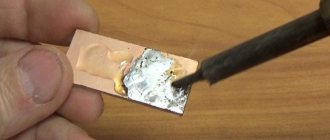A popular consumable for soldering repairs of electrical equipment and welding machines is rosin for soldering. A substance of organic nature does not dissolve in water and melts when heated. The softening temperature of rosin is within +50...70°C.
A very fragile translucent substance is obtained in various ways, the color depends on the production method, it comes with a bright light yellow tint, brownish of varying saturation and dark red. Recognizable by its glassy sheen; when broken, it crumbles to form shells and irregularities.
For the first time, they learned how to prepare a mixture of natural carboxylic acids with isomers in Ancient Greece. In the city of Colophon, musicians rubbed bows with it to improve the sound of string instruments. Subsequently, another application was found for “Kolofolon resin”; it is used in the production of paints and varnishes and some types of plastics, film and thermal “smoke units”.
What it is?
Rosin is a natural resin obtained by heat treatment of coniferous tree sap. After fractional separation of water and turpentine, a thick mixture is formed, which, when dried, turns into an uneven lump. The chemical composition of rosin depends on the source material and the degree of purification. The organic mixture includes resin acids, essential oils and impurities. The more impurities that impair the electrical insulating properties, the darker the color.
The quality of the material is regulated by GOST 19113-84, and is classified by grade based on purity. Highest, first and second. The last two yellow colors are used in electrical engineering. When choosing a flux, the melting point of rosin is important; for some types it reaches + 130°C. The density of the substance ranges from 1.07 to 1.10 g/cm3; it is mainly made from pine resin. A technology has been developed for the extraction of wood flour and the processing of paper production waste. The production method largely determines the technological properties; according to the standard, it is indicated on the packaging of the soldering flux.
Appearance of rosin
Preparing the soldering iron for use
In everyday life, “ordinary” electric soldering irons are used. There are those that operate from 220 V, there are from 380 V, there are from 12 V. The latter are characterized by low power. They are used mainly in enterprises in areas with increased danger. They can also be used for domestic purposes, but they heat up slowly, and the power is not enough...
You need to choose the one that fits comfortably in your hand
Power selection
The power of the soldering iron is selected depending on the nature of the work:
- For working with electronic elements - 40-60 W.
- With a thickness of soldered parts up to 1 mm - 80-100 W.
- Thick-walled elements - with a wall of 2 mm - require power of 100 W and above.
Soldering irons come in different capacities and operate on different voltages.
In a household, it is enough to have two soldering irons - one low-power one - 40-60 W, and one “medium” one - about 100 W. With their help, it will be possible to cover about 85-95% of needs. But it is still better to entrust the soldering of thick-walled parts to a professional - this requires specific experience.
Preparing for work
When the soldering iron is plugged in for the first time, it often starts to smoke. This burns out the lubricants that were used in the production process. When the smoke stops coming out, turn off the soldering iron and wait until it cools down. Next you need to sharpen the tip.
First you need to burn off the grease
Sharpening the tip
Next, you need to prepare the tip for work. It is a cylindrical rod made of copper alloy. It is fixed using a clamping screw, which is located at the very end of the heat chamber. In more expensive models, the tip may be slightly sharpened, but basically there is no sharpening.
How to prepare a soldering iron for use
We will change the very tip of the sting. You can use a hammer (flatten the copper as you need), a file or emery (just grind off the unnecessary). The shape of the tip is chosen depending on the intended type of work. It can be:
- Flatten it into a spatula (like a screwdriver) or make it flat on one side (angled sharpening). This type of sharpening is needed if massive parts will be soldered. This sharpening increases the contact surface and improves heat transfer.
- You can grind the edge of the tip into a sharp cone (pyramid) if you plan to work with small parts (thin wires, electrical parts). This makes it easier to control the degree of heating.
- The same cone, but not so sharp, is suitable for working with conductors of larger diameter.
Sharpening with a “spatula” is considered more universal. If it is formed with a hammer, the copper will be compacted and the tip will need to be adjusted less often. The width of the “shovel” can be made larger or smaller by trimming it on the sides with a file or emery. With this type of sharpening you can work with thin and medium-sized parts to be soldered (rotate the tip to the desired position).
Soldering iron tinning
If the soldering iron tip does not have a protective coating, it must be tinned - covered with a thin layer of tin. This will protect it from corrosion and rapid wear. This is done the first time you turn on the instrument, when the smoke has ceased to be emitted.
The first method of tinning a soldering iron tip:
- bring to operating temperature;
- touch the rosin;
- melt the solder and rub it along the entire tip (you can use a wooden sliver).
Second way. Moisten a rag with a solution of zinc chloride and rub the heated tip on the rag. Melt the solder and rub it with a piece of table rock salt over the entire surface of the tip. In any case, the copper should be covered with a thin layer of tin.
Why is it needed?
The main reasons for the failure of household electrical appliances, drive equipment and tools are non-working boards, burnt capacitors and other elements that require replacement, the installation of which is carried out by soldering. Having certain skills in working with a soldering iron, every craftsman can repair electrical equipment on his own.
When metal melts, oxidation occurs. Non-ferrous metals react much more actively with oxygen when hot, forming oxides that worsen the connection. To remove the oxide film during soldering, fluxes are used; they are applied to the surfaces of the parts being soldered; they are necessary to protect against the effects of air components; they reduce the surface tension of the solder when coating the parts.
What exactly is rosin used for when soldering? Only as a flux. The environmentally friendly substance is characterized by a number of advantages:
- does not form harmful fumes when heated;
- does not impair the electrical conductivity of the solder;
- improves the strength of connections;
- prevents the spreading of liquid metals;
- used when connecting low-melting contacts.
An old proven technique: an exercise for mastering the quality of soldering from experienced
Anyone can test their skills and improve their practical skills. To do this, you will need a soldering iron with a prepared workplace and a piece of copper wire from the electrical wiring.
12 pieces of equal length, about a couple of centimeters, are cut from it. They will serve as the edges of the cube. And it will need to be soldered and tested for strength with a slight compression force in the palm.
Practice this exercise and master proper, high-quality soldering. I hope that my material about rosin: what it is will help you develop this skill well. If you know other ways or have a different opinion from me, then write it in the comments. I recommend watching the video by AlexGyver “How to solder with a soldering iron.”
It contains a lot of useful information.
What types exist
Varieties of rosin fluxes according to production method, composition of raw materials:
- Gum rosin is often produced from pine resin, less often from other species of coniferous trees. Raw materials are collected by cutting the bark of living trees. The name of the flux appeared by analogy with the original product. Pine resin contains up to 80% rosin and 20% turpentine. Gum rosin is of high quality, containing from 90 to 94% resin acids, up to 1.5% fatty acids. The concentration of unsaponifiable substances is no more than 6...7%. Gum rosin is rare. It is often replaced with extraction and tallow analogues.
- Extraction rosin mixture is produced by extracting a mixture of crushed coniferous wood (threshing) and gasoline, which acts as a solvent for organic acids. This rosin differs from gum rosin in its dark shade and softening temperature; it is 10–15 degrees lower, averaging +55°C. The acid number of the extraction soldering flux is within 150 mg KOH/g, the mass fraction of fatty acids is not higher than 12%. To improve performance properties, extraction rosin is purified. The procedure is called abandonment. Adsorbers absorb coloring components. The resulting product is close to gum in its chemical composition and properties.
- Tall solder rosin is the lightest. Produced from sulphate soap by vacuum distillation. The result is a resinous substance with a high concentration of abietic acid, which accelerates crystallization. The feedstock is waste from pulp and paper production. In terms of technical characteristics, tallow rosin is comparable to gum rosin.
A few words about the features of various types of rosin fluxes. Refractory gum contains practically no fatty acids, which are unacceptable when soldering some metals. The extraction water can contain up to 10% of them, and the total oil content can contain even more. In retail, flux is sold packaged in round metal boxes. The technical specifications are indicated on the label.
Soldering technology
For high-quality soldering with rosin, preparation begins with stripping the metal at the joint. It is necessary to remove dirt mechanically, remove grease using gasoline or alcohol.
The soldering iron will serve much better if it is tinning - covering the lower part of the tip with a thin layer of flux. To do this, the tool is warmed up and dipped into a jar of rosin or liquid flux is applied with a brush. The coating should be uniform, without gaps.
A piece of rosin is applied to the soldering area and melted. When the entire place is cleaned, the oxides are dissolved, solder is applied. It is melted, distributed, and it connects the parts. After cooling, tinning and varnishing are done.
The ends of the wires are first coated with flux, melting it with a soldering iron, then solder is applied, distributed evenly so that it covers the outside of the wire and connects all the fibers.
Alcohol composition
Previously, rosin for soldering was sold only in liquid form . Mainly alcohol solutions were used. It is convenient to work with them on any soldering area. Why melt solid pieces of resin and disperse hot liquid over the board, if it is much easier to apply a solution with a brush that will penetrate into the narrowest places and fill cracks.
If the volume of work is large, you can cover the entire area with an alcohol composition at once and gradually melt the flux in the soldering areas. The correct rosin solution contains an equal amount of components and adheres well to the metal surface.
Tubular solders
Tubular solder is a thin tube filled with flux .
The correct consumable for the job should match as closely as possible the chemical composition of what is already on the board. If it is not known what was soldered before, the entire board is cleaned. Modern technologies make it possible to fill a tube with rosin or other flux without breaks and with the same density along the entire length.
Soldering with tubular fluxes controls the amount of material. After work, there is no need to wipe the board, freeing it from any remaining rosin.
Rosin is a universal flux used for soldering non-ferrous metals. It is a natural product and does not adversely affect health. In many oil and fat fluxes, recycled resin is added to improve the properties.
How to use rosin
When soldering parts and contacts, it is recommended to consider several points:
- Hot rosin can dissolve oxide films. This property is relevant when soldering contaminated surfaces.
- When choosing a temperature regime, the melting temperature, not the melting temperature of the resin, is taken into account. Recommends heating the flux and parts to +100…130°C. On a cold surface, rosin and solder cool quickly.
- The use of resinous fluxes by beginners often results in the formation of soot on the soldering iron tip. It is important to maintain the heating temperature, prevent increased smoke formation, and not turn the rosin into a dark brown viscous mass.
Advantages and disadvantages
Rosin for soldering has strengths and weaknesses. Advantages:
- Does not conduct electricity.
- It is an accessible and inexpensive material for soldering. This is due to the fact that the materials for making rosin are distributed all over the world.
- Effectively removes oxide film from the surface of the processed material.
- It does not dissolve in water and therefore the liquid cannot wash away the resinous layer.
- Retains its characteristics at negative temperatures.
- Safe for the human body. The resinous material does not emit harmful fumes and does not require the use of additional protective equipment.
Flaws:
- For a resin-based composition to show its effectiveness, you must be able to work with it. It is recommended to practice on non-working parts or mechanisms.
- Rosin is not effective when working with large parts.
- A fragile material that must be transported and stored carefully.
Safe for the human body
Using solder with rosin
Manufacturers offer tin-lead solders, which contain rosin resin. It is sold in rods wound on reels. In fact, these are thin tin-lead tubes, the cavities of which are filled with molten rosin. It is both a flux and an additive material that forms a connection during tinning. Advantages of solder with rosin:
- increasing soldering speed;
- simplification of the soldering process.
During the soldering process, it is important to maintain a certain temperature regime. When overheated, rosin smoke appears and the release of tin and lead vapors increases. Safety precautions should not be neglected. If hot flux or solder gets on your skin, it must be removed; you must immediately shake off the melt particles from your clothing.
Where else is it used?
Everyone involved in the repair of devices knows only soldering rosin. But the substance can also be used in other areas:
- Resin waste is used in the pulp industry for gluing layers of cardboard products.
- It is used as an emulsifier in the production of artificial rubber, rubber, eco-leather, mastic and paints.
- The substance reduces slipping, so it is used to rub the strings of musical instruments, billiard cues, and ballerinas’ pointe shoes.
- Small particles of rosin are used to create artificial smoke in cinema.
- In sports, rosin “flour” is used as a hand lubricant to ensure a strong grip without slipping.
- In applications with high inertia, resin lubricant is used as an auxiliary coating for belts.
- Some rosin esters are used as food additives. They are not only harmless, but even useful.
You may be interested in this Features of free energy
Areas of application
The substance is so versatile that it can be used in various branches of food, heavy, and light industries. The main advantage of this raw material is its availability and low cost.
Resin
To make high-quality and effective solder, you need to use rosin resin obtained from the resin of coniferous resins. Raw materials are added to paint and varnish products and lubricate parts of production machines. In sports, this is also a relevant option for reducing friction and a strong grip on sports equipment.



